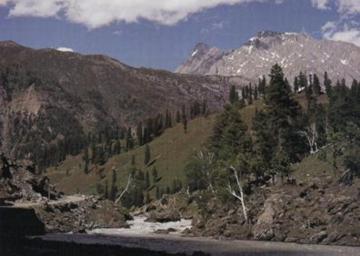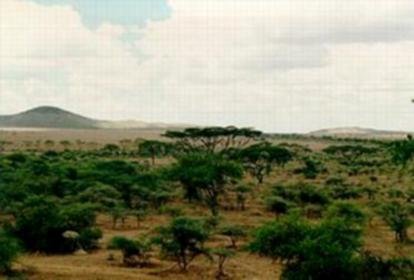Blog #10
Why is dissection an important part of a biology curriculum? Which animals and/or plants should be included in biological studies?
Dissection is the process of disassembling and observing something to determine its internal structure and as an aid to discerning the functions and relationships of its components. Dissection helps us understand the parts of organisms better. Dissection makes biology much more fun and can allow students to learn faster and easier. Understanding the parts of the organisms can help scientist determine how organisms' body works, survive, and reproduce. I think monkey should be included in biological studies because they are very similar to humans.
About Me
Thursday, April 14, 2011
Thursday, April 7, 2011
Blog #9 Semester 2
Blog 9
Define the different forms of community interaction: competition, commensalism, mutualism, predation, parasitism Give an example and a picture for each
Predation is the interaction where a predator feeds on other organisms. An example of predation is lion killing and eating a deer.
Competition is when organisms fights for survival and food. An example of competition is tigers fighting for food.
Commensalism is the relationship of two organisms, where one organism benefits but the other is neutral. An example of commensalism is the tree with birds in the nest.
Mutualism is the relationship where two organisms interact and both benefit. An example of mutualism is the bacteria in plants.
Parasitism is relationship where one organism lives in other organism, where one benefit by harming the other one. An example of parasitism is the bacteria disease in human body.
Define the different forms of community interaction: competition, commensalism, mutualism, predation, parasitism Give an example and a picture for each
Predation is the interaction where a predator feeds on other organisms. An example of predation is lion killing and eating a deer.
Competition is when organisms fights for survival and food. An example of competition is tigers fighting for food.
Commensalism is the relationship of two organisms, where one organism benefits but the other is neutral. An example of commensalism is the tree with birds in the nest.
Mutualism is the relationship where two organisms interact and both benefit. An example of mutualism is the bacteria in plants.
Parasitism is relationship where one organism lives in other organism, where one benefit by harming the other one. An example of parasitism is the bacteria disease in human body.
Wednesday, April 6, 2011
Blog #8 Semester 2
Blog 8 Your choice talk about something you learned or ask a question about something that is confusing you
From this biology class, I learned that doing experiments can help me learn faster and easily. I can remember the knownledge in the book better by doing experiments. Also I found out that doing experiments can help me learn and have fun in the same time. This is something that I ever knew until I had this biology class.

From this biology class, I learned that doing experiments can help me learn faster and easily. I can remember the knownledge in the book better by doing experiments. Also I found out that doing experiments can help me learn and have fun in the same time. This is something that I ever knew until I had this biology class.

Blog #7 Semester 2
Blog 7 Compare and contrast two biomes describe them in detail include pictures of plants and animals you are liklely to see.
Two types of biomes are alpine and tundra. Alpine is cold, snowy, windy. It is filled with mountains and there are high winds and ice. They have an altitude of about 10,000 feet or more. Even in summer, the temperature is around 10 to 15 degree C. In winter, the temperture is below freezing and last from October to May. Because the severe climate of the Alpine biome, plants and animals have developed adaptations to those conditions. There are only about 200 species of Alpine plants. At high altitudes there is very little CO2, which plants need for them to carry on photosynthesis. Some animals that lives in Alpine are alpaca, andeam condor, chinchilla, llama, mountain goat, snow leopard, vicuna, and yak.

A savanna is a grassland scattered with shrubs and isolated trees, which can be found between a tropical rainforest and desert biome. There is not enough rain falls on a savanna to support forests. Savannas are also known as tropical grasslands. They are found in a wide band on either side of the equator on the edges of tropical rainforests. Unlike Apline, Savannas have warm temperature year round. There are actually two very different seasons in a savanna; a very long dry season (winter), and a very wet season (summer). In the dry season only an average of about 4 inches of rain falls. Between December and February no rain will fall at all. Savanna has animals like african elephant, caracal, emu, lion, koala bear, and nile crocodile.

Two types of biomes are alpine and tundra. Alpine is cold, snowy, windy. It is filled with mountains and there are high winds and ice. They have an altitude of about 10,000 feet or more. Even in summer, the temperature is around 10 to 15 degree C. In winter, the temperture is below freezing and last from October to May. Because the severe climate of the Alpine biome, plants and animals have developed adaptations to those conditions. There are only about 200 species of Alpine plants. At high altitudes there is very little CO2, which plants need for them to carry on photosynthesis. Some animals that lives in Alpine are alpaca, andeam condor, chinchilla, llama, mountain goat, snow leopard, vicuna, and yak.

A savanna is a grassland scattered with shrubs and isolated trees, which can be found between a tropical rainforest and desert biome. There is not enough rain falls on a savanna to support forests. Savannas are also known as tropical grasslands. They are found in a wide band on either side of the equator on the edges of tropical rainforests. Unlike Apline, Savannas have warm temperature year round. There are actually two very different seasons in a savanna; a very long dry season (winter), and a very wet season (summer). In the dry season only an average of about 4 inches of rain falls. Between December and February no rain will fall at all. Savanna has animals like african elephant, caracal, emu, lion, koala bear, and nile crocodile.

Subscribe to:
Comments (Atom)





